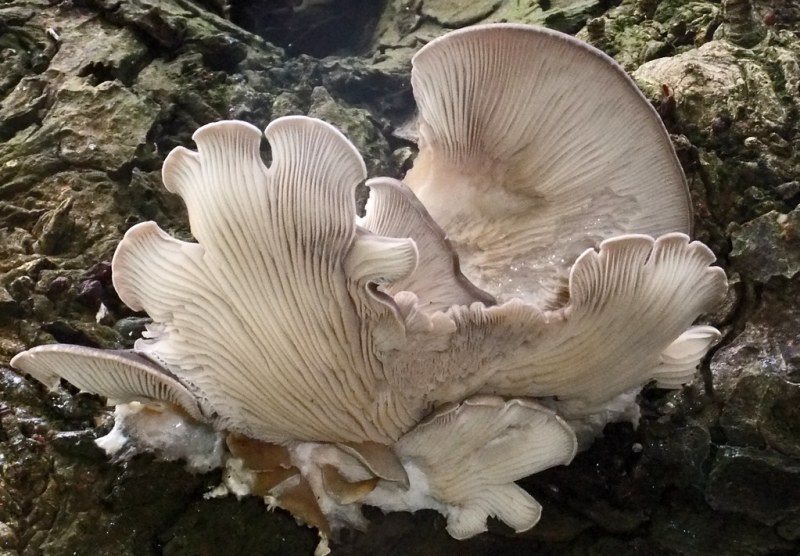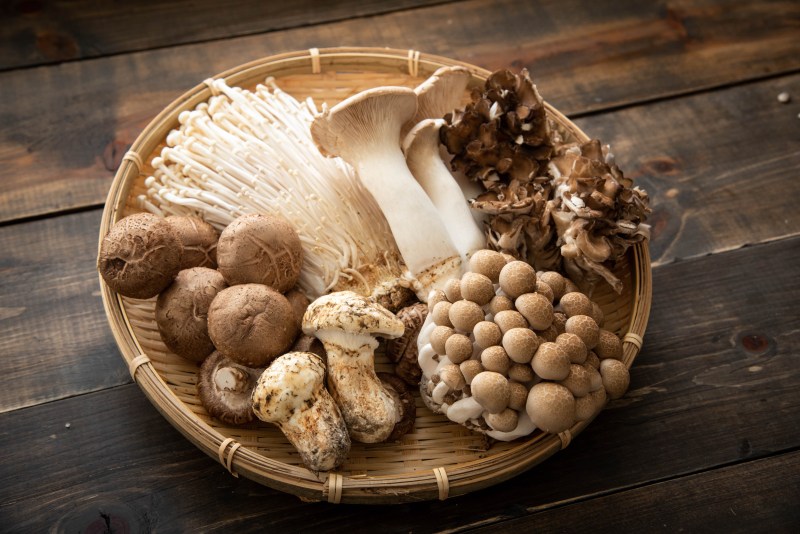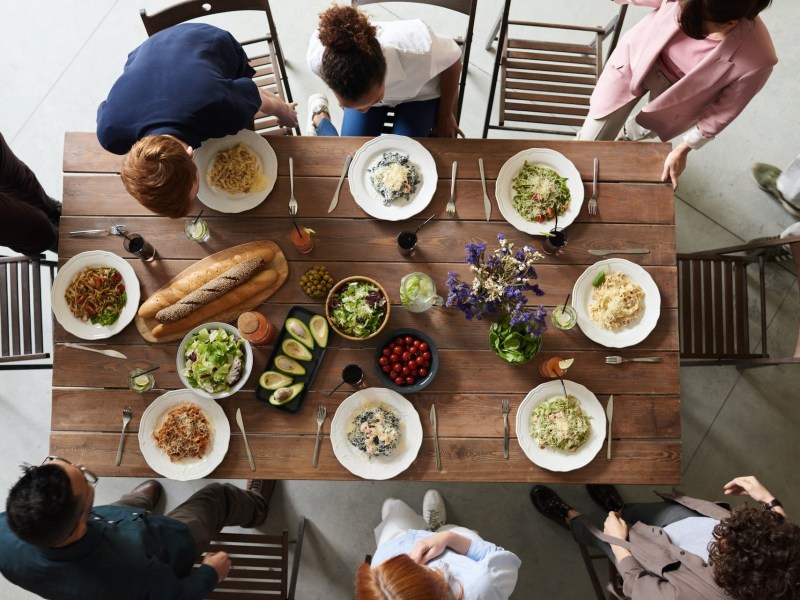
We loved to hate them as kids. These weird, rubbery masses, sprouting up as if from nowhere, greedily invading all of our beloved foods — like pizza. How dare they. But as our tastes evolved and we reached adulthood, we gained a new appreciation for this strange little food. Maybe it was tasting it at a restaurant that wasn’t Pizza Hut for the first time, or perhaps it snuck its way onto your plate at a special event or party, and you took a bite, not recognizing your childhood culinary enemy. By then it was too late, and you were lost in the woody, earthy, savory seduction that is the oyster mushroom.
Before you knew it, you were going back for seconds and thirds, enjoying each buttery bite of this exquisite ingredient, questioning your whole identity. Maybe it wasn’t nearly that dramatic and you’ve always just thought they were tasty. Either way, the oyster mushroom is a massively under-appreciated gem, and it’s time to turn that around. Let’s take a deeper look into the delicious fungus known as the oyster mushroom.

Oyster mushroom varieties and how to spot them
You don’t have to be an expert in oyster mushroom identification, but we have the basics to know. In most cases, oyster mushrooms grow on trees, usually on dead and decomposing wood (yum). This makes them fairly recognizable when they’re spotted growing in the woods. However, take care. While relatively easy to identify due to their large and beautiful fan shape and impressive gills, they do have some poisonous doppelgangers. For this reason, foraging for your own mushrooms is never advised unless you are with an experienced forager.
Thanks to many plant-identifying apps these days, people have unfortunately become over-confident in their abilities to identify wild plants, sometimes with fatal consequences. If you’re untrained in the art of wild mushrooms, it’s best to leave your foraging to the produce section of the grocery store like the rest of us.
There are six types of oyster mushrooms, each with its own special characteristics. Each type is delicious, with earthy, woody, umami notes. But the flavor differences are subtle, making them easily interchangeable in your recipes.
Pearl oyster
This is probably the most recognizable, commonly used oyster mushroom here in the United States. Slightly sweet, earthy, and woodsy, these mushrooms are mild and tender, and absolutely delicious in a variety of preparations.
Blue oyster
Similar in flavor to the Pearl, the Blue oyster mushroom is distinguishable by its notably blue color when it first starts to grow. As it ages, its color transforms into a silvery grey on top, with classically whitish gills. When cooking, treat it any way you would a Pearl.
Golden oyster
Mainly found in Asia, the Golden oyster is striking in its beauty. Clusters of bright golden mushrooms spring from its base and give off a distinct scent, comparable to anise. These are especially tasty when fried.
Pink oyster
Vibrantly coral-colored and ruffled, Pinks are native to the tropics as they thrive in warmer temperatures. Their scent and flavor are strongly woody, and wonderful when used in a braise or soup. Just don’t count on their flamboyant color to stick around — it fades to golden when cooked.
Phoenix oyster
Easily confused with the Pearl, the Phoenix varies only slightly from its cousin, being smaller and paler. Their bodies are slightly thicker as well, helping them stand up to more intense cooking methods. These are wonderful when stir-fried.
King oyster
The King oyster looks nothing at all like other oyster mushrooms. With a more classic shape, the King has a thick, sturdy stem and the traditional brown/white color combination. It differs from its cousins in the way it grows — in the ground, rather than attached to trees. The flavor of the King is meaty and savory, with a structure that can take the heat.

The how-to’s to know about mushrooms
Health benefits of oyster mushrooms
Oyster mushrooms naturally contain a high number of statins, which help reduce high cholesterol levels. Recent studies have shown oyster mushrooms have an anti-tumor effect on the body due to their polysaccharides. A polysaccharide is a complex carbohydrate composed of sugar molecules, thought to stimulate the cancer-fighting abilities in our immune systems. If you ask us, those are pretty remarkable health benefits for a little fungus.
How to store oyster mushrooms
Always store oyster mushrooms in the refrigerator. If your mushrooms are store-bought, they could be kept in the store’s packaging for up to 5 days. If they are shrink-wrapped, poking a few holes in the plastic will buy you another day or two of freshness.
If your mushrooms are fresh from harvesting, keep them in a loosely closed plastic bag for up to 8 days. Another thing to note is their location in your fridge. Because mushrooms are so porous and absorb flavor so readily, avoid setting them near any particularly pungent foods, like raw onions or fish.
How to clean oyster mushrooms
Unlike most mushrooms, oysters (for the most part) grow on wood, rather than in the ground, so they should be a little cleaner than other types. The cleaning process is the same as with other mushrooms. Never rinse or submerge your mushrooms in water as they will quickly become water-logged and lose all of their delicate flavor. It’s best to simply wipe them down with a damp cloth or paper towel, taking care not to leave any excess moisture behind.

How oyster mushrooms work for any dish
How to cook oyster mushrooms
Because of their subtle flavor, oyster mushrooms are tremendously versatile and easy to cook with. Toss them in a salad or on a pizza, and add them to your soups, stews, and sauces. They have such a beautiful flavor that they can stand magnificently on their own as a side dish.
People who turn up their noses at mushrooms need to give them another chance. Oyster mushrooms are a great one to try to see if your taste buds like them now. From the main star to a supporting role, oyster mushrooms can stand on their own or blend into any recipe.
- They make a great vegan option – Don’t want to switch to tofu? Then mushrooms are a substitute to sink your teeth into. Think covered in batter and deep fried, think as a meat substitute (as in a burger), and think as the dominant flavor of the soup. There are numerous vegan recipes to highlight the scrumptious meat of the mushroom, so no other protein is necessary.
- Try them in different ways – We don’t only mean trying them in various dips and dishes. How you cut oyster mushrooms plays a role in how they will come out in the recipe. Finely chopped, left as large as possible, or thinly sliced — make sure you mix it up with the size of the mushroom.
- Where you get the mushrooms from matters – Like we mentioned, no foraging on your own without a seasoned guide. But your local grocery store may not have them (or good ones) at all. But where you could get the best quality oyster mushrooms is at your local Asian market and natural grocery store. Those are the best options, aside from getting them straight from the tree.

(From Family Style Food)
The perfect dish for first-time mushroom-goers
Sauteed oyster mushrooms with garlic butter recipe
This recipe truly lets the beauty of the oyster mushroom shine. Simply accented with a bit of herby garlic butter, these mushrooms are exquisite all on their own or served over pasta. They are wonderful to fold into an omelette for breakfast or tossed into a wrap at lunchtime.
Ingredients:
- 10 ounces oyster mushrooms
- 1 tablespoon extra-virgin olive oil
- Salt and freshly ground black pepper
- 2 tablespoons butter
- 1 clove garlic, minced
- 1/4 cup fresh Italian parsley leaves
Method:
- Gently clean mushrooms using a damp paper towel, removing excess dirt and moisture.
- Chop into bite-sized pieces.
- Heat a large skillet on medium-high heat, then add the oil to the pan.
- When the oil is hot, add mushrooms in a single layer. Cook, without turning, until one side is golden brown. Repeat with another batch of mushrooms if necessary.
- Remove mushrooms from pan, and place onto serving platter. With the pan off the heat, add butter, garlic and parsley, swirling until the butter is melted and the garlic is fragrant.
-
Pour the butter and garlic mixture over the mushrooms and serve.
If it’s been a bit since you’ve tried mushrooms or you want to start eating healthier, oyster mushrooms are the answer to everything. Their flavor works for beginners wanting to give them another go and their healthy attributes are what your body needs. Stop being grossed out by the look and feel of a mushroom and let these oysters change your mind about how delicious mushrooms are.
Editors' Recommendations
- How a Michelin-starred sushi chef crafts omakase to go
- Clams vs mussels: The differences explained
- The 8 best hot dog topping alternatives you need to try
- How to brunch like the French with lobster croissant and champagne
- Your guide to the pescatarian diet for healthier living




